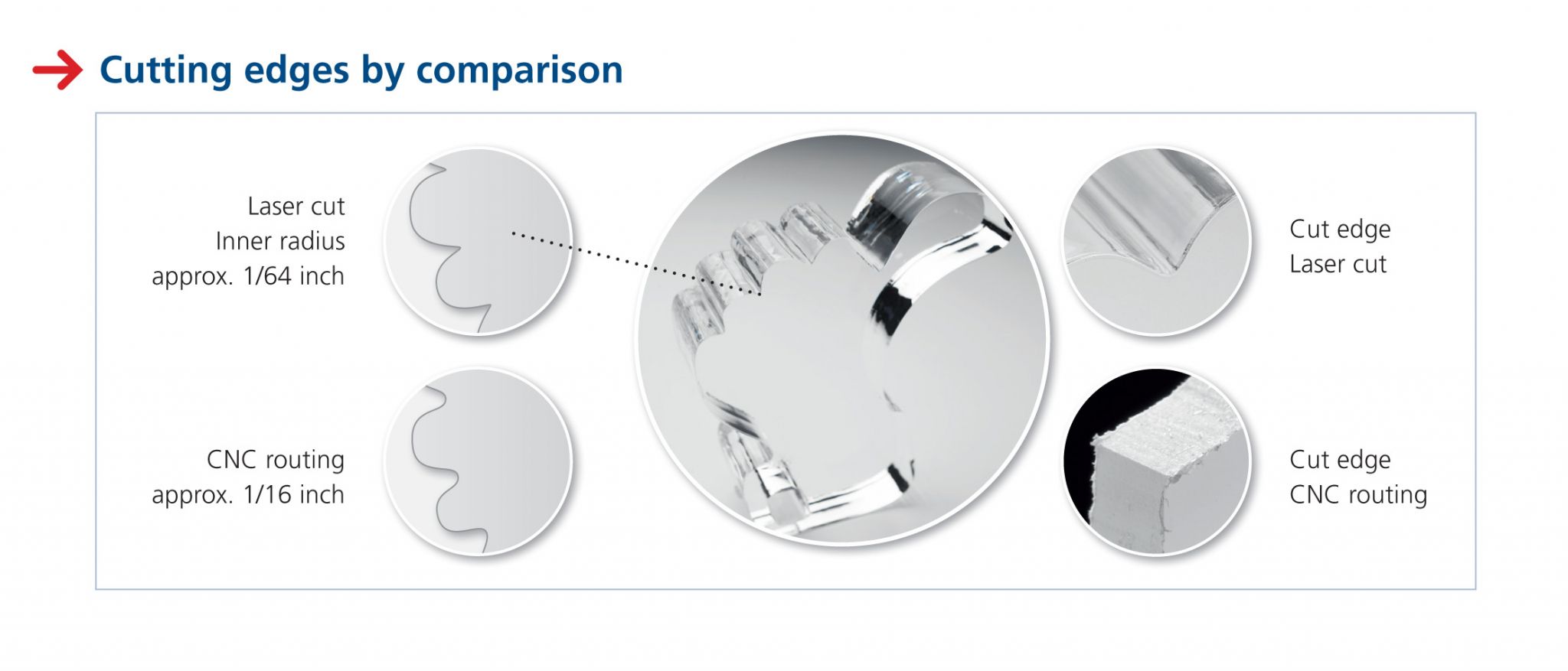Contour cutting
Ultraviolet-curing (UV-curing) inkjet printers have become today’s top tool of choice for printing onto rigid substrates like polystyrene and acrylic, but the next question is how to contour-cut these substrates with acceptable quality and registration to the print.
The fastest and most accurate way to achieve perfect registration in a production environment is an optical vision recognition system. These are available on some laser cutting systems and can be added to others.
In this context, a vision recognition system uses a small camera mounted to the laser head to identify the printed registration marks on the material. Then, software automatically adjusts the cutting vectors to correct for any offset, skew, linear distortion or non-linear distortion.
This functionality allows the operator to quickly cut substrates with high precision, without having to spend time manually checking the registration for each piece. Productivity is improved, the quality of end products is more consistent and scrap is minimized.
Today’s cutting software supports most common file formats, including Adobe Illustrator (AI), Photoshop Document (PSD), PostScript (PS), Encapsulated PostScript (EPS), Portable Document Format (PDF), Drawing (DWG) and Drawing Exchange Format (DXF). Plug-ins are available to automate the creation of registration marks in popular graphic design software packages. And vision process can be integrated with popular raster image processor (RIP) packages, such as those from Caldera, ColorGate and Ergosoft.
Engraving
Laser systems have many benefits in terms of cutting, but they can also be used for engraving, allowing sign shops to expand their offerings.
Engraved plastic signs, for example, are highly durable. Cast acrylic can be engraved with finely detailed logos and images, then edge-lit with light-emitting diodes (LEDs) for locations that require illuminated signage.
Lasers can similarly be used to engrave metal and wood signs, but they can also open wholly new markets for a sign shop, such as cut-and-engraved wedding invitations or direct mail.
Answering the demand
As customers demand unique items and higher quality, the sign industry has been challenged to make production processes easier and faster. Laser cutting and engraving systems combined with optical registration can meet many of these challenges.
A standard laser interface and vision registration system can fit relatively seamlessly into a sign shop’s workflow, given their compatibility with existing RIP and design software. Setup is fast, tooling costs lower and scrap reduced. Meanwhile, higher-quality finished products will keep customers coming back for more.
Jon Colley is the Trotec division director for Trodat Marking Canada in Mississauga, Ont., which offers laser engraving, marking and cutting systems. For more information, visit www.troteclaser.com and www.rayjetlaser.com.






